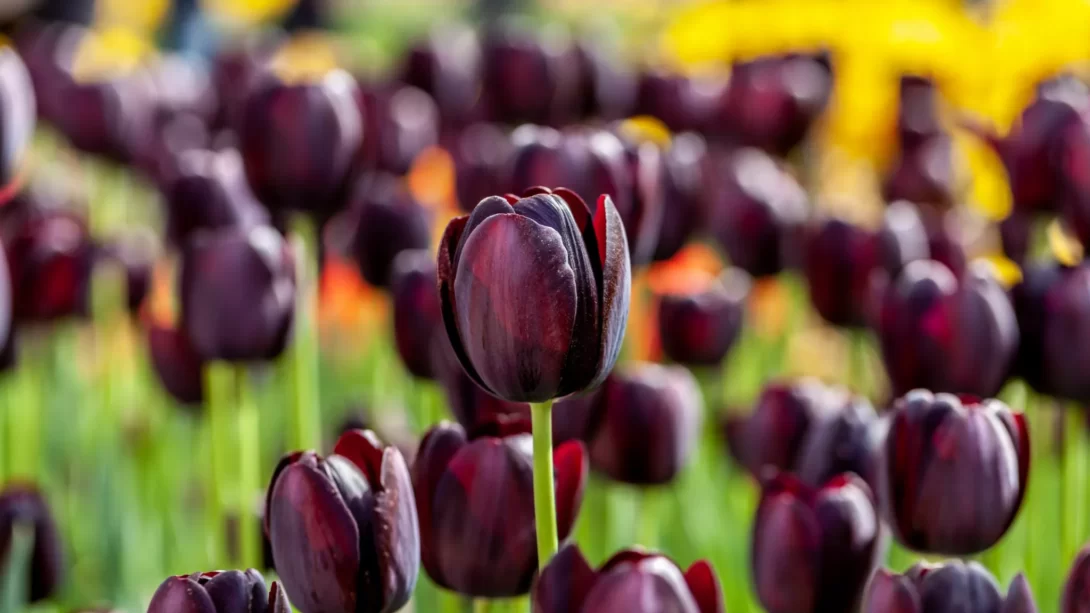Tulips, with their vibrant colors and elegant shapes, are a cherished sight in gardens and floral arrangements. A fascinating aspect of these flowers is their behavior in response to environmental changes, particularly their opening and closing patterns. This article delves into the intriguing world of tulips, focusing on whether these flowers close at night and the factors influencing this behavior.
Tulips: A Botanical Overview
Tulips are part of the Liliaceae family, known for their bulbous nature and spring blooming season. They exhibit a wide range of colors and forms, making them a favorite among gardeners and florists. The growth cycle of tulips begins with a bulb, which sprouts and flowers primarily in the spring. Understanding their growth cycle is key to appreciating their unique behavioral patterns, including their responses to daily environmental changes.
The Phenomenon of Flower Opening and Closing
Flower opening and closing, known as nyctinasty, is a phenomenon observed in many plant species. This movement is typically a response to changes in light, temperature, and humidity. In tulips, the mechanism involves changes in turgor pressure within the cells at the base of the petals. These movements are not just fascinating to observe but also serve important biological functions for the plant.
Do Tulips Close at Night?
The behavior of tulips in response to nightfall is a subject of interest. Generally, tulips do exhibit a tendency to close their petals at night or during periods of low light. This closing is not as pronounced in all tulip varieties; some may close partially, while others may exhibit more noticeable movement. The extent and regularity of this closing can vary depending on the specific type of tulip and the environmental conditions it is exposed to.
The Role of Environmental Factors
Environmental factors play a significant role in the opening and closing behavior of tulip flowers. Light is a primary trigger, with tulips typically opening in response to daylight and closing as it diminishes. Temperature fluctuations also influence this behavior, with cooler temperatures often leading to the closing of the petals. Additionally, humidity levels can affect the turgor pressure in petal cells, thereby impacting the opening and closing movements of tulips.
Closing at Night: An Adaptive Strategy
The nocturnal closing of tulip petals is more than just a fascinating botanical behavior; it serves several adaptive purposes. Closing at night can protect the pollen and nectar from dew and potential fungal infections, which are more prevalent during cooler and more humid night conditions. This behavior also helps to maintain the reproductive parts of the flower, ensuring that they are ready for pollination during the day when pollinators are more active.
Observing Tulip Behavior in Your Garden
Gardeners can engage in a delightful observation of their tulips’ daily rhythms. To best observe these changes, choose a spot in your garden where tulips are exposed to natural light cycles. Observe the tulips during different times of the day – in the early morning, midday, and as the sun sets. Note the degree of petal opening and closing, and consider keeping a journal to track these changes over several days or throughout the blooming period.
Creating Optimal Conditions for Tulips
To ensure healthy growth and the natural behavior of tulips, it’s crucial to provide them with the right growing conditions. Plant tulip bulbs in well-drained soil in a sunny spot. While tulips need good sunlight to thrive and exhibit their natural opening and closing behavior, they also benefit from cooler temperatures. In warmer climates, planting them in a location that gets afternoon shade can be beneficial. Regular watering, while avoiding waterlogging, and appropriate fertilization will also support their health and flowering.
Conclusion
Tulips, with their dynamic opening and closing movements, add a layer of enchantment to gardens and natural landscapes. This behavior, closing at night and opening during the day, is influenced by light, temperature, and humidity, serving important protective and reproductive functions. Understanding these patterns not only enhances our appreciation of tulips but also underscores the intricate ways in which plants interact with their environment. For gardeners, being mindful of these patterns and providing the right care can lead to a thriving display of these beautiful and fascinating flowers.




